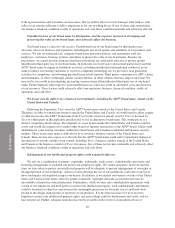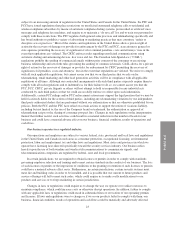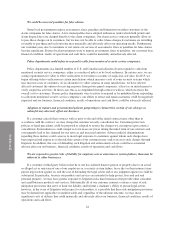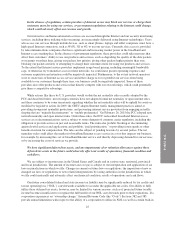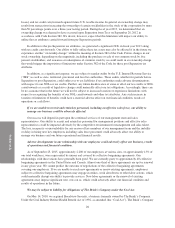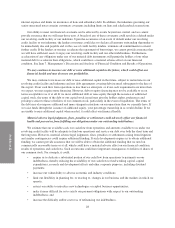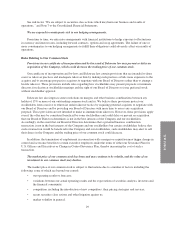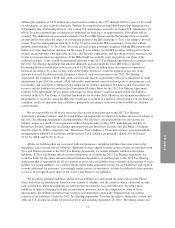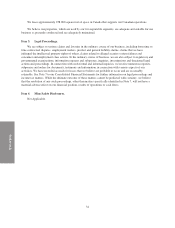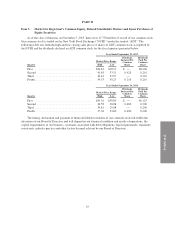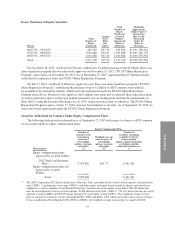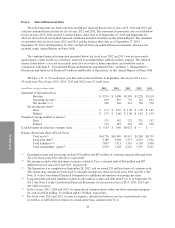ADT 2015 Annual Report Download - page 103
Download and view the complete annual report
Please find page 103 of the 2015 ADT annual report below. You can navigate through the pages in the report by either clicking on the pages listed below, or by using the keyword search tool below to find specific information within the annual report.
FORM 10-K
See risk factor “We are subject to securities class actions which may harm our business and results of
operations,” and Note 7 to the Consolidated Financial Statements.
We are exposed to counterparty risk in our hedging arrangements.
From time to time, we enter into arrangements with financial institutions to hedge exposure to fluctuations
in currency and interest rates, including forward contracts, options and swap agreements. The failure of one or
more counterparties to our hedging arrangements to fulfill their obligations could adversely affect our results of
operations.
Risks Relating to Our Common Stock
Provisions in our certificate of incorporation and by-laws and of Delaware law may prevent or delay an
acquisition of the Company, which could decrease the trading price of our common stock.
Our certificate of incorporation and by-laws and Delaware law contain provisions that are intended to deter
coercive takeover practices and inadequate takeover bids by making such practices or bids more expensive to the
acquiror and to encourage prospective acquirors to negotiate with our Board of Directors rather than to attempt a
hostile takeover. These provisions include rules regarding how stockholders may present proposals or nominate
directors for election at stockholder meetings and the right of our Board of Directors to issue preferred stock
without stockholder approval.
Delaware law also imposes some restrictions on mergers and other business combinations between any
holder of 15% or more of our outstanding common stock and us. We believe these provisions protect our
stockholders from coercive or otherwise unfair takeover tactics by requiring potential acquirors to negotiate with
our Board of Directors and by providing our Board of Directors with more time to assess any acquisition
proposal. These provisions are not intended to make us immune from takeovers. However, these provisions apply
even if the offer may be considered beneficial by some stockholders and could delay or prevent an acquisition
that our Board of Directors determines is not in the best interests of the Company and our stockholders.
Accordingly, in the event that our Board of Directors determines that a potential business combination
transaction is not in the best interests of the Company and our stockholders but certain stockholders believe that
such a transaction would be beneficial to the Company and our stockholders, such stockholders may elect to sell
their shares in the Company and the trading price of our common stock could decrease.
In addition, the termination of employment in connection with a merger or acquisition may trigger change in
control and severance benefits to certain executive employees under the terms of either our Severance Plan for
U.S. Officers and Executives or Change in Control Severance Plan, thereby increasing the cost of such a
transaction.
The market price of our common stock has been and may continue to be volatile, and the value of an
investment in our common stock may decline.
The market price of our common stock is subject to fluctuations due to a number of factors including the
following, some of which are beyond our control:
• our operating results or forecasts;
• variations between our actual operating results and the expectations of securities analysts, investors and
the financial community;
• competition, including the introduction of new competitors, their pricing strategies and services;
• recent securities class actions and other litigation against us;
• market volatility in general;
29



